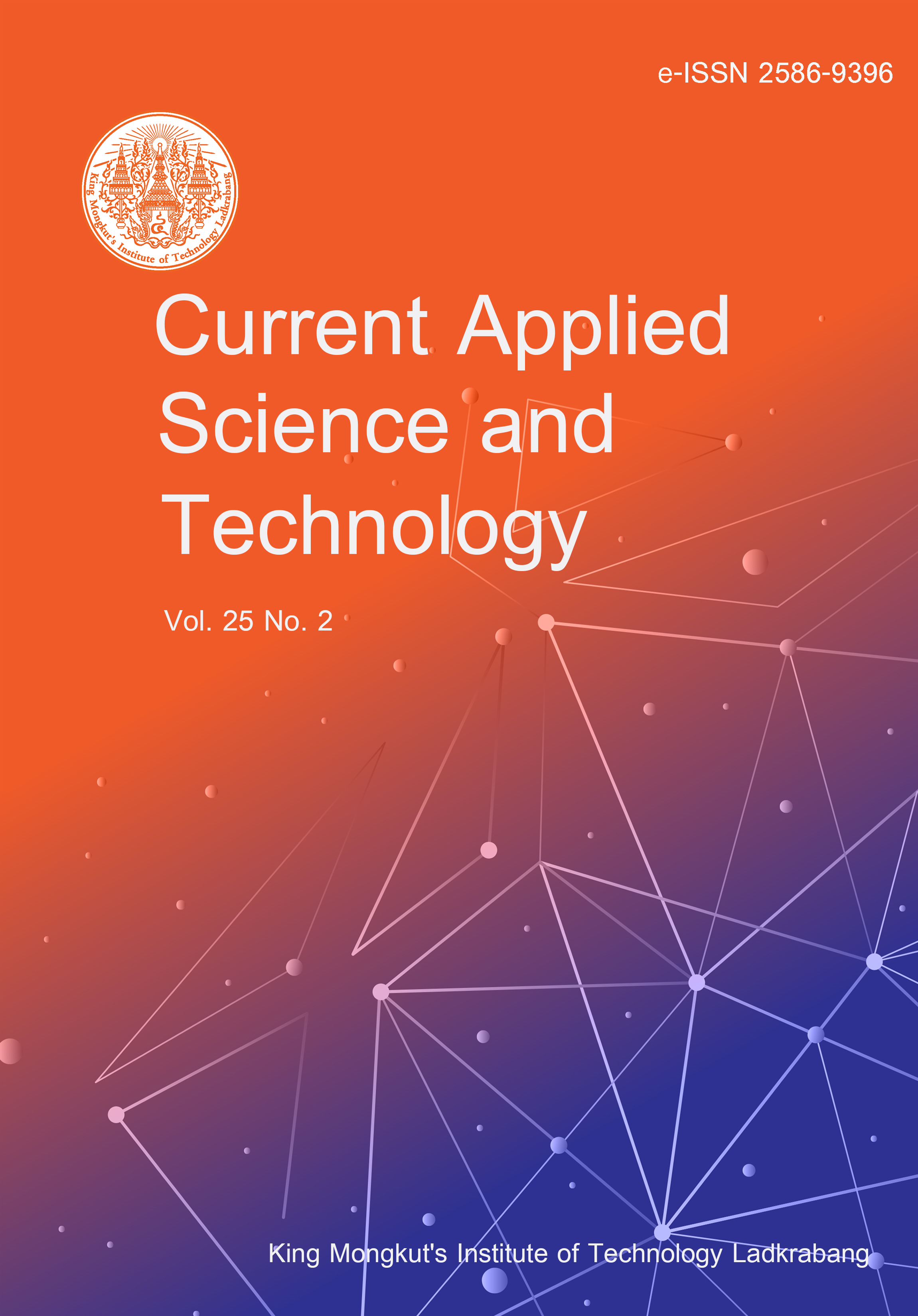Finding Critical Factors for Developing Dynamic Models to Optimize Greenhouse Solar Dryer’s Environmental Conditions
Main Article Content
Abstract
This paper is focused on the formulation of a mathematical model for greenhouse solar dryer systems in the context of determining the principal drivers of efficiency of the solar dryer. The model was built by evaluating the correlation coefficients of each term and only those terms which had high levels of significance were retained. To test this model, experiments were replicated with measurements being taken in the different sections of the greenhouse to provide a large spectrum of the environmental conditions involved. The values of the technical coefficients are predicated on internal air temperature, humidity ratio and weight of the product with fixed scales, avoiding sophisticated complex models prone to overfitting. By using terms with high correlation, the model is less likely to be affected by outliers and total correlation or cross correlation is low, thereby making the model practical. The outcomes of this research, therefore, offer a scientifically viable and a practical approach to enhancing drying processes in greenhouse solar dryer systems.
Article Details

This work is licensed under a Creative Commons Attribution-NonCommercial-NoDerivatives 4.0 International License.
Copyright Transfer Statement
The copyright of this article is transferred to Current Applied Science and Technology journal with effect if and when the article is accepted for publication. The copyright transfer covers the exclusive right to reproduce and distribute the article, including reprints, translations, photographic reproductions, electronic form (offline, online) or any other reproductions of similar nature.
The author warrants that this contribution is original and that he/she has full power to make this grant. The author signs for and accepts responsibility for releasing this material on behalf of any and all co-authors.
Here is the link for download: Copyright transfer form.pdf
References
Abdel-Ghany, A. M., & Kozai, T. (2006). Dynamic modeling of the environment in a naturally ventilated, fog-cooled greenhouse. Renewable Energy, 31(10), 1521-1539. http://doi.org/10.1016/j.renene.2005.07.013
Ahmad, A., & Prakash, O. (2021). Development of mathematical model for drying of crops under passive greenhouse solar dryer. Materials Today: Proceedings, 47, 6227-6230. http://doi.org/10.1016/j.matpr.2021.05.180
Bolton, D. (1980). The computation of equivalent potential temperature. Monthly Weather Review.
Dutch Greenhouses. (2023). Hydroponics greenhouse system. https://dutchgreenhouses. com/en/irrigation/hydroponics
Eden Green Technology. (2023). What is vertical farming? Everything you should know about this innovation. https://www.edengreen.com/blog-collection/what-is-vertical-farming
ETE. (2022). Maesom banana solar dryer greenhouse. https://www.facebook.com/share/p/9w4C484w61NrpXGq/
Fatnassi, H., Boulard, T., & Bouirden, L. (2013). Development, validation and use of a dynamic model for simulate the climate conditions in a large scale greenhouse equipped with insect-proof nets. Computers and Electronics in Agriculture, 98, 54-61. http://doi.org/10.1016/j.compag.2013.07.008
Hastie, T., Tibshirani, R., & Friedman, J. (2009). The Elements of Statistical Learning. Springer.
Janjai, S., Intawee, P., Kaewkiew, J., Sritus, C., & Khamvongsa, V. (2011). A large-scale solar greenhouse dryer using polycarbonate cover: Modeling and testing in a tropical environment of Lao People’s Democratic Republic. Renewable Energy, 36(3), 1053-1062. http://doi.org/10.1016/j.renene.2010.09.008
Joudi, K. A., & Farhan, A. A. (2015). A dynamic model and an experimental study for the internal air and soil temperatures in an innovative greenhouse. Energy Conversion and Management, 91, 76-82. http://doi.org/10.1016/j.enconman.2014.11.052
Mahayothee, B., & Boonrod, Y. (2018). Project manual for investment support project in aid of solar drying system installation and deployment. Phetkasem Printing Group.
Reyes-Rosas, A., Molina-Aiz, F. D., Valera, D. L., López, A., & Khamkure, S. (2017). Development of a single energy balance model for prediction of temperatures inside a naturally ventilated greenhouse with polypropylene soil mulch. Computers and Electronics in Agriculture, 142, 9-28. http://doi.org/10.1016/j.compag.2017.08.020
Testbook. (2024). Fourier’s law - definition, derivation, differential form and FAQs. https://testbook.com/physics/fouriers-law
The Engineering ToolBox. (2003). Solids - Specific Heats. https://www.engineeringtoolbox.
com/specific-heat-solids-d_154.html
The Engineering ToolBox. (2004). Air - humidity ratio. https://www.engineeringtoolbox.
com/humidity-ratio-air-d_686.html
The Engineering ToolBox. (2009). Absorbed solar radiation. http://www.engineeringtoolbox.com/solar-radiation-absorbed-materials-d_1568.html
The Engineering ToolBox. (2013). Polymers - specific heats. https://www.engineeringtoolbox.com/specific-heat-polymers-d_1862.html
Trautmann, N., & Richard, T. (1996). Moisture content. https://compost.css.cornell.edu/calc/moisture_content.html
United States Environmental Protection Agency (EPA). (2023). Integrated pest management (IPM) principles. https://www.epa.gov/safepestcontrol/integrated-pest-management-ipm-principles
Zapałowicz, Z., & Garnysz-Rachtan, A. (2022). Theoretical and experimental comparisons of total solar transmittance for polycarbonate sheet with twin wall rectangular structure. Applied Mechanics, 3(4), 1163-1175. http://doi.org/10.3390/applmech3040066






